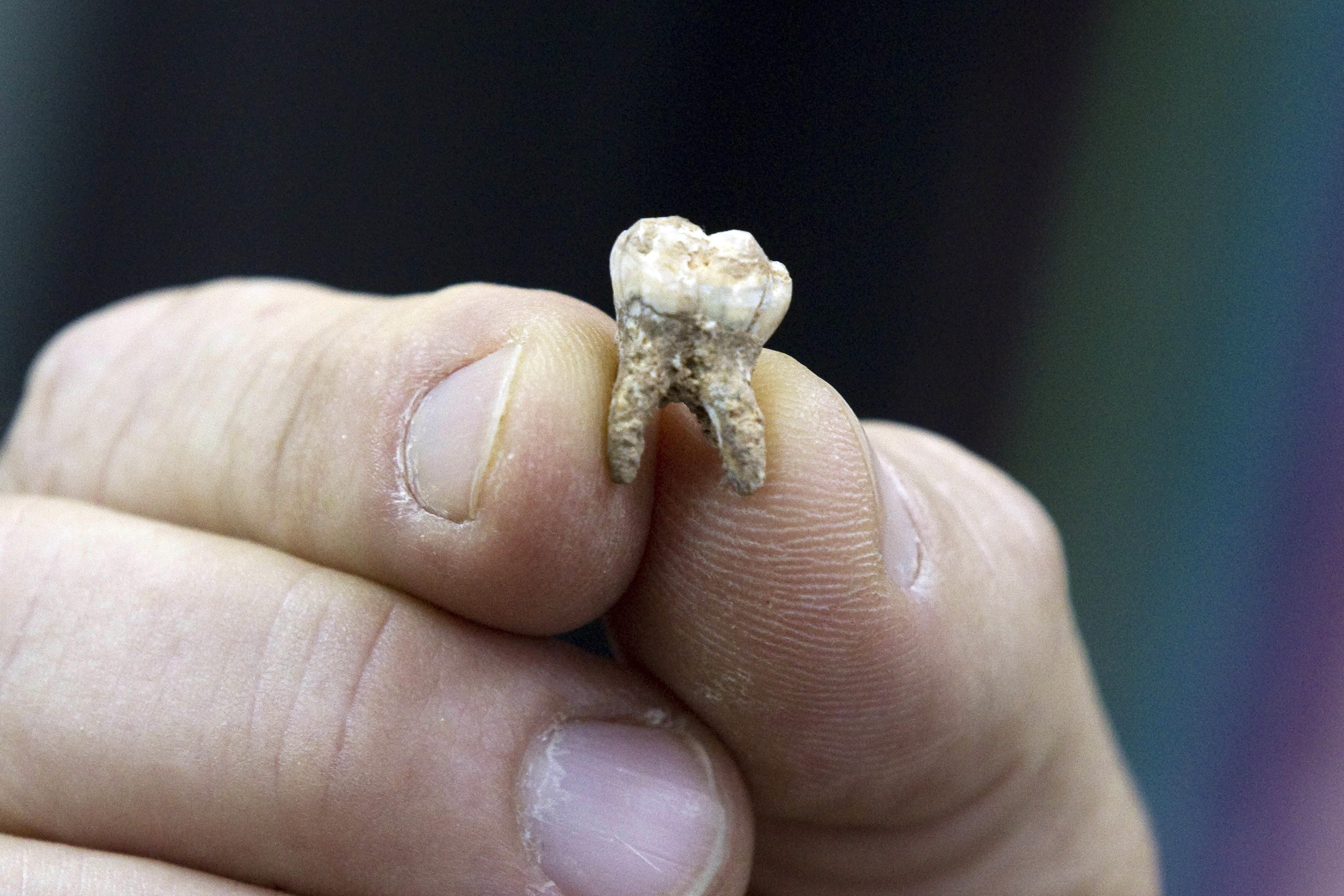
Avi Gopher, of Tel Aviv University's Institute of Archaeology, said testing of stalagmites, stalactites and other material found in a cave east of Tel Aviv indicates that eight teeth uncovered there could be the earliest traces so far of our species.
"Our cave was used for a period of about 250,000 years -- from about 400,000 years ago to about 200,000 years ago," he told AFP.
"The teeth are scattered through the layers of the cave, some in the deeper part, that is to say from 400,000 years and through all kinds of other layers that can be up to 200,000 years. The oldest are 400,000 years old", he added."
That calls into question the widely held view that Africa was the birthplace of modern man, said Gopher, who headed the dig at Qesem Cave.
"It is accepted at the moment that the earliest Homo sapiens that we know is in east Africa and is 200,000 years old, or a little less. We don't know of anywhere else where anyone claims to have an earlier Homo sapiens," he said.
Gopher said the first teeth were discovered in 2006 but he and his team waited until they had several samples, then conducted years of testing, using a variety of dating methods, before publishing their findings.
Digging continues at the cave, the university said, with researchers hoping to "uncover additional finds that will enable them to confirm the findings published up to now and to enhance our understanding of the evolution of mankind, and especially the appearance of modern man."























COMMENTS
Comments are moderated and generally will be posted if they are on-topic and not abusive.
For more information, please see our Comments FAQ